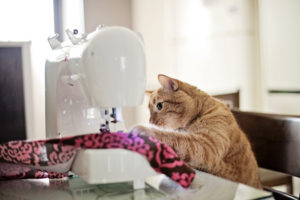
Is It Cat Friendly?
Answer: That really shouldn’t be a consideration but for cat lovers out there, I’m throwing in this one for free!
For the rest of us…
Each year the heads of sewing machine industry gather around a large table putting their heads together to generate strategies to lure every sewist from all levels of experience and expertise to purchase the “latest and greatest” sewing machine.
The past 10 years alone have witnessed a consistent and dynamic evolution not only in the manufacturing process but in the way these sewing machines are used. This is a far, far cry from the time when I was a little girl sitting beside my aunt as she made quilts on a treadle Singer sewing machine – one very similar to the image below.
Keeping It Simple
No doubt, back in that day (late 1890s to the early 1900″s) the decision-making process was quite simple. Aside from availability, price was likely the only factor. The basic requirement for a sewing machine was also quite simple – the only thing needed was a threaded needle to go up and down through the fabric to catch the bobbin thread from underneath.
These machines sewed only 1 stitch – a straight stitch, and each stitch was the same length. Period. The power was provided by placing your foot (or both feet) on the rectangular shaped metal platform near the floor and bending your ankles up and down. When your feet stopped moving, so did the machine.
These machines were heavy – made of steel with a wooden cabinet and they were made to last. This was well before the day of planned obsolescence and the luxury of tossing it (or anything else, for that matter) in the dumpster (or back alley) and buying a new one after 2-3 years was unthinkable.
Other features of this vintage sewing machine are depicted in the diagram below taken from the manufacturer’s user’s manual:
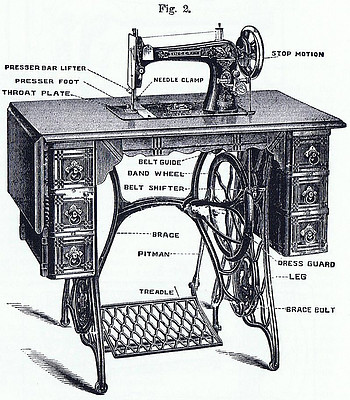
Choices, Choices
Today, choosing a sewing machine is not so simple. In the interest of time I will not even attempt to describe even a fraction of machines available and their respective attributes however, you can click on a picture or manufacturer’s name below each machine and it will take you to the respective website – each site is guaranteed to provide enough eye candy to put you in a sugar coma! I should note here also, this is a very small sampling and the images only represent the top of the line models from each manufacturer.
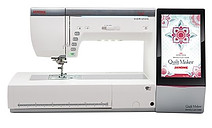
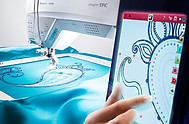
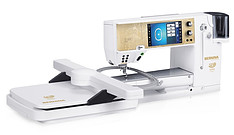
Now that you’ve done a little window shopping let’s return to reality and discuss what you came here for – the top five items to consider when purchasing a sewing machine.
To begin with here are my Top Two Recommendations:
1) BUY THE MOST EXPENSIVE MACHINE YOU CAN AFFORD.
2) BUY FROM A REPUTABLE, LOCAL DEALER.
Do this and the remainder of the list will pretty well take care of itself.
Buying a sewing machine is, in my opinion, a major purchase and…you do get what you pay for. However, if you took a look at the high end models and even a few mid-range models you also see it not necessary to go straight to the top. Man of these newer machines may do everything but bake bread and wash windows but there is no need spending money for features you do not want or need or may never use.
On the other hand, buying as much machine as you can comfortably afford saves you the hassle of having upgrade later on down the road or ending up with a machine that lacks the workmanship and durability to perform your desired tasks.
Regarding using a local dealer – when you machine needs servicing or a repair you know exactly where to go. It also helps local businesses. These business owners and employees can offer you advice and instruction that you will not get from an online review.
3) Decide what exactly you want to do with your sewing machine.
If a straight stitch or maybe a zigzag stitch or making a button hole now and then is all you are looking for then your best bet is to find a machine with as few options as possible.
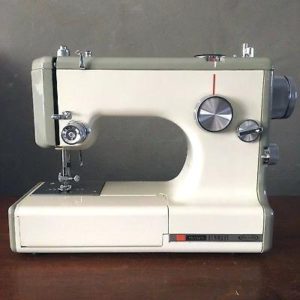
If you plan do any decorative stitching or embroidery then it is best to look into a model that accommodates an embroidery hoop.
For creating embroidery on a large scale, i.e., a business, then you need to look into a computerized machine with a few bells and whistles. Many models have the option to purchase or download patterns and will practically do the work for you – all you have to do is set it up.
On the subject of running a business such as a quilting business, you may want to invest in a machine that not only sews a variety of stitches and stitch lengths but on that also incorporates quilting software. This takes the process to another level that allows you first design your own quilt before piecing and sewing it together!
4) Determine if your machine needs to be portable.
Most of the time a sewing machine will be set up in a designated room or area of your home and stay there. However, there may come a time when you will want to join a quilt guild or attend a retreat or special class and will need to be able to bring your own machine. If these activities occur frequently I would check the overall weight specification.
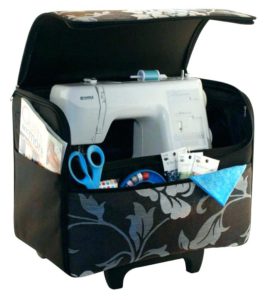
Typically, the heavier the machine the higher the quality. It also usually means less noise, less vibration and increased durability. However, for frequent traveling you may want to consider a lower end of the mid-range models. If it becomes damaged in transit the cost for repairs is minimal compared to the costs of repairs or replacement of a high end computerized machine.
5) Decide who will be using the machine
It seems there is a growing number of teens, tweens (and according to Pinterest, cats) are becoming interested in sewing. If you have younger individuals in your home who may be using the same machine you should consider purchasing a machine that won’t feel too intimidating to use. Returning to the business model, if your interests extend into teaching others to sew or quilt, a machine that is well-built but with a lower learning curve is your best bet.
Final Thoughts and Other Useful Information
Considering today’s shopping trends it goes without saying, it is always a good idea to first do a little online research. However, before making a final decision, grab some fabric swatches and head down to your local sewing machine dealer and take a “test drive”. They will have a variety of floor models available for you to try as this is really the best way for you to make this type of purchase. The result? A sewing machine that fits the way you sew and the establishment of a relationship with a local merchant who can quickly and easily provide the service and repairs when you need them.
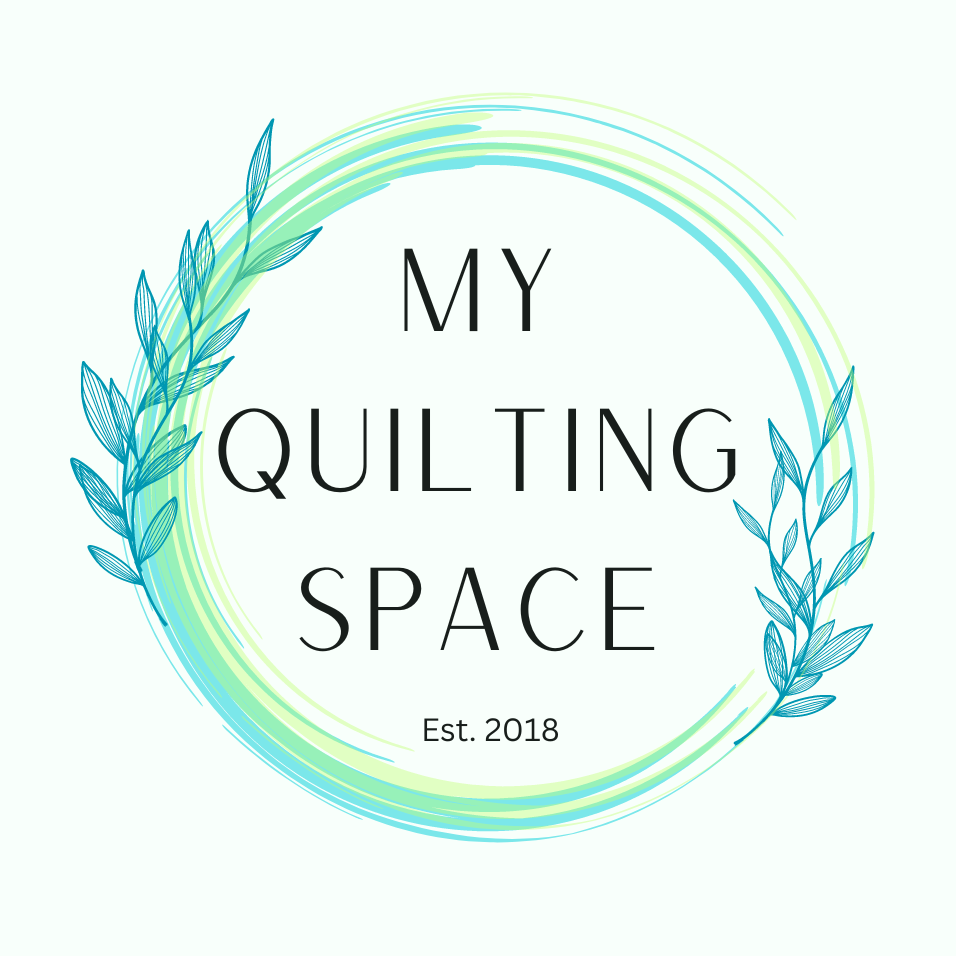
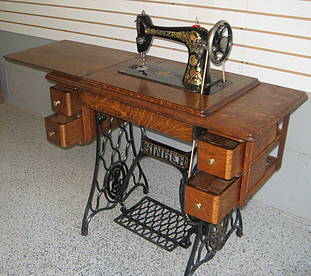
Hi many thanks for this interesting article. I’ve been thinking about getting my partner a machine as she enjoys using it to relax in the evening time. She got a really cheap one last time and it lasted next to no time at all. I think you are right that I might as well go for a much more expensive one because surely you get for what you pay for!
Hi Russell,
Yes, I’ve learned the hard way – buy the most machine you can afford and while it is tempting to go online and purchase one for less, in the long run you will save time and money when you are able to buy from a local dealer. Right now I’m using a Janome – it’s not bad but this is what I’ve put on my wish list to Santa: https://myquiltingspace.com/my…
Wowwy! I about fell out of my chair when I saw the prices of those beautiful machines! I bet they must really pretty much do everything except bake that bread and wash the dishes! I remember my first sewing machine purchase was a small Singer. Didn’t do any of that fancy embroidery or quilting, just for regular sewing. Was a great little machine though! So nowadays, like those super expensive ones you showed, do they do regular sewing (like creating clothing) as well as the fancy stuff like embroidery and quilting or do you have to get separate machines for those?
Hi Lynne
Ha-ha! Yes, I had the same reaction when I first learned of these high end machines. I observed a demonstration of the Janome Memory Craft 1500 about a year ago. As impressive it was and even if I could afford it I’m not sure I would want one.
You can do regular sewing on these but in the grand scheme of things using a machine like this seems like overkill – like driving a Ferrari to the end of your driveway to get mail from your mailbox when a simple bicycle would do!
The people who buy these machines are also running a small business doing embroidery or quilting, etc., and need as fast a turn around from design to product and distribution as possible. The high costs of such a high end machine is often offset as a deduction at the end of the year since the machine is also considered a business expense.
This is an excellent guide for choosing a sewing machine. It is the purpose that decide which sewing machine is going to fulfill the need. I want a sewing machine for basic use,should be light in weight and portable too. I liked the idea of going to local sewing dealer for test drive.Thanks for writing this informative post.
Thank you for stopping by! With so many choices available making a decision like this is difficult – at least it is for me. I am in the market for a new machine and felt there would be others “out there” like me in the same boat.
I grew up with the newest model sewing machine my dad bought my mom, and I have had a love of sewing my entire life. Back then I could do a bunch of different stitches and zig zags, and I thought that machine was the bomb! Now, the machines can write out your name in inbroidary and with the computer in them, they can do so much more than I ever thought a sewing machine could do! LOL. I do agree you get what you pay for, and I love the models you displayed. Thanks for the info!
Babs
I’m glad you enjoyed my article! It’s crazy what these newer machines can do. The next step up is a long arm quilting machine. If you’re not familiar you can go here. The complex and exquisite stitching will turn any quilt into a work of art.
I enjoy sewing, though I don’t do it often… but your article is very interesting, I didn’t realize the high end sewing machines were becoming so impressive with all their features… nor as steep with their price tags! Holy Cow!! I never imagined that one could spend so much on one of those! However, the features they offer make it well worth it! …I will definitely keep that in mind for the next time I buy a sewing machine.
No doubt a majority of the cost of those really expensive, high end machines are deducted as a business expense at the end of the year.
There is a local fabric store I frequent and they have many of these machines on display. It is mesmerizing to watch these machines do all the embroidery work on their own – no one sitting there doing anything. Talk about productivity!
Hello Susan, how are you?
I am the kind person that on my 15’s had my first sewing machine that wasn’t eletric, was manualy and pedal like the first pic. I am not to old, just half centure, but this was in other country.
I learned how to sewing by myself, because I want so bad to learn how to embroidery, so a lady said to me: “keep practicing until you get it”. Was very hard but I got it in 2 days.
Those days, I don’t sewing anymore, because became easy to buy clothes them make them.
I didn’t know the havy the machine it is, the better a quality, wow, that’s is very interresting.
Based on the prices you showing, (yes, I could buy a car), this make me think that’s sewing machine became a luxury no a need anymore when house wives could implement the economy of they home.
Question: Do you think those days, people still buying sewing machiness like 20 years a go?
All the best for you my dear,
Hi Telma,
Yes, people are still buying sewing machines and in all price ranges but not so much for garment making. As you stated, clothing that is mass produced and outsourced is much cheaper to buy than make.
However, if you want something that is truly original – a garment no one else has, and you want a garment with a perfect fit, then making it yourself is the best way.
Hey i really enjoyed this article, it was very informative. I have never sewed in my life so i think it would be pretty hard for me to learn. There looks like there is a lot of different kinds of machines, are you good at sewing? If so you could always sew things and put them up for sale on your site.
Hi Justin,
I’m glad you found this article informative! Sewing in and of itself isn’t so hard – sewing a shirt or skirt is much quicker and easier than making a quilt but anything is possible!
When it comes to sewing I used to better at it than I am now – I’m kinda relearning after taking a good 25 – 30 year break. My granddaughters keep asking me when I’m going to open an Etsy store. I need to get this website up and running first then maybe I’ll find time to make items to sell!